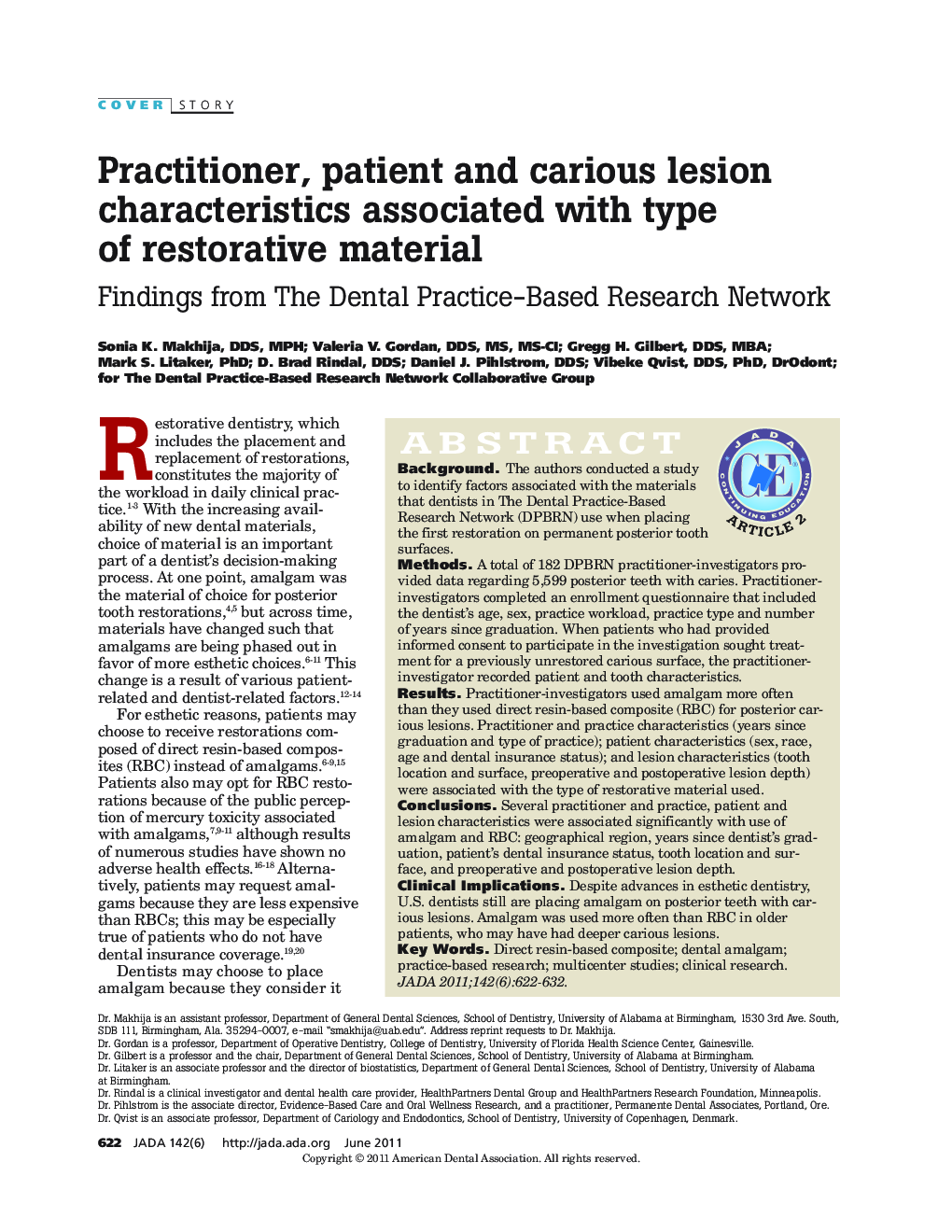| Article ID | Journal | Published Year | Pages | File Type |
|---|---|---|---|---|
| 3139278 | The Journal of the American Dental Association | 2011 | 11 Pages |
ABSTRACTBackgroundThe authors conducted a study to identify factors associated with the materials that dentists in The Dental Practice-Based Research Network (DPBRN) use when placing the first restoration on permanent posterior tooth surfaces.MethodsA total of 182 DPBRN practitioner-investigators provided data regarding 5,599 posterior teeth with caries. Practitioner-investigators completed an enrollment questionnaire that included the dentist’s age, sex, practice workload, practice type and number of years since graduation. When patients who had provided informed consent to participate in the investigation sought treatment for a previously unrestored carious surface, the practitioner-investigator recorded patient and tooth characteristics.ResultsPractitioner-investigators used amalgam more often than they used direct resin-based composite (RBC) for posterior carious lesions. Practitioner and practice characteristics (years since graduation and type of practice); patient characteristics (sex, race, age and dental insurance status); and lesion characteristics (tooth location and surface, preoperative and postoperative lesion depth) were associated with the type of restorative material used.ConclusionsSeveral practitioner and practice, patient and lesion characteristics were associated significantly with use of amalgam and RBC: geographical region, years since dentist’s graduation, patient’s dental insurance status, tooth location and surface, and preoperative and postoperative lesion depth.Clinical ImplicationsDespite advances in esthetic dentistry, U.S. dentists still are placing amalgam on posterior teeth with carious lesions. Amalgam was used more often than RBC in older patients, who may have had deeper carious lesions.
